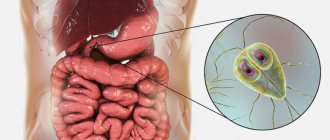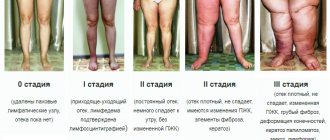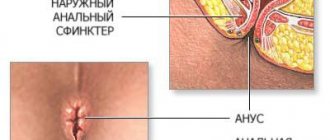Published: 11/03/2021 10:00:00 Updated: 11/03/2021
Urticaria is an allergic disease, the causes of which in children and adults can be very different. The main symptom of the disease is the appearance of blistering rashes on the skin, which are very itchy and resemble a nettle burn.
According to statistics, 25% of the entire population of the planet has encountered this pathology at least once in their lives, mainly children and women under the age of 40. With constant contact with the allergen, the disease becomes chronic, and in half of all cases it is accompanied by Quincke's edema.
Reasons for the development of urticaria
Hives never develop on their own; there is always a reason for this.
In some cases, identifying it is not difficult, but sometimes it is difficult to do. Most often, urticaria in children appears after using certain medications or eating certain foods. The most allergenic foods for babies are honey, nuts, fish, food additives, spices, sausages, and processed foods. Therefore, they are not recommended for children under 3 years of age.
Also, provoking factors include:
- insect bites;
- the presence of parasites in the body;
- plant pollen;
- mold;
- chemicals, including household chemicals;
- latex;
- ultraviolet radiation;
- vibration.
However, it is not always possible to find out what exactly the patient developed allergic urticaria to. In about a third of all patients with this diagnosis, the causes of the disease, even after numerous tests and analyses, remain unknown.
Traditional therapy
How to treat hives? The first step is to eliminate the causes and triggers of the disease if possible. Refusal of medications that provoke rashes, an attempt to avoid the influence of provoking physical factors, as well as adherence to a hypoallergenic diet can reduce the frequency of relapses of the disease, but all this has rather low effectiveness without drug therapy.
An important task is the rehabilitation of foci of chronic infection and correction of concomitant somatic pathology. Sometimes these measures are enough to prevent relapses.
The main drugs for urticaria, with which drug therapy begins, are, of course, H1-histamine receptor blockers. According to the recommendations of the World Allergy Organization, therapy should begin with second-generation antihistamines.
If symptoms persist for 2 weeks, then it is permissible to increase the dose to four times and continue taking it for up to 4 weeks. A sedating H1 blocker may be prescribed at night. If ineffective, it is recommended to change the drug or add antileukotriene drugs. During exacerbations, a short course of systemic glucocorticosteroids (3–7 days) is acceptable.
If manifestations of urticaria/angioedema persist, the issue of switching to 2nd line drugs must be resolved - glucocorticosteroids, immunosuppressants (cyclosporine), monoclonal antibody drugs (omalizumab). In the treatment of urticaria pigmentosa, as well as urticaria caused by physical factors, the stabilizer ketotifen is used mast cell membranes.
Angioedema (with the exception of hereditary forms associated with defects in the complement system or kinin system) is treated according to the same principles. In case of life-threatening conditions associated with the risk of asphyxia (swelling of the larynx, tongue), emergency treatment with the administration of adrenaline is required; emergency intubation or tracheostomy may also be necessary.
Symptoms of urticaria
The main manifestation is the appearance on the skin of red or pink spots of various shapes, and blisters, the size of which can reach several centimeters.
A slight swelling may appear, which gradually disappears over the course of a day, rarely two. If the swelling affects the deeper layers of the skin or mucous membranes, angioedema may result - a life-threatening condition that requires immediate medical intervention.
The rash of allergic urticaria is always accompanied by unbearable itching, and some patients describe it as an unbearable burning sensation. Violent scratching of such areas can lead to infection of the epidermis with further complications in the form of pustules and wounds.
Minor manifestations of urticaria include:
- headache;
- elevated temperature;
- sleep disorder;
- anxiety;
- loss of appetite.
According to the nature of the course, allergic diseases are divided into two types.
Acute urticaria is diagnosed most often. Blisters and swelling of the skin in this form appear completely suddenly, sometimes against the background of a person’s excellent health. Most often caused by some external reasons, food. It also happens after using medications, especially when self-medicating. Symptoms go away on their own within a few days to several weeks.
Chronic urticaria is a condition in which symptoms continue to persist for more than 6 weeks after the first rash on the skin. This variant is characterized by a wave-like course, when periods of complete absence of symptoms (recovery) are abruptly replaced by exacerbations with the appearance of a new portion of spots and blisters. This is accompanied by unbearable itching and rapid development of Quincke's edema. The emerging elements of the rash can merge with each other, covering more and more new areas of the skin.
Sometimes periods of complete well-being without symptoms can last for a long time - up to 10 years.
Children's urticaria is an allergic skin disease, which most often develops against the background of an existing exudative diathesis and appears due to food products introduced as complementary foods.
It has been noticed that this type of allergy mainly develops in babies who are bottle-fed or eat foods that are not appropriate for their age.
Inspection
If a patient comes to an appointment with a rash, then it is necessary to understand how similar what he sees is to a urticarial rash. The presence of elements other than a blister, as well as atypical secondary elements - crusting, erosion, persistent hyperpigmentation - casts doubt on the diagnosis.
Also, during the examination, you should pay attention to the signs of atopic diseases and other somatic pathologies. If you suspect a connection between physical factors and the development of urticaria, provocative tests are informative. The doctor can apply streak stimulation with a spatula, apply heated or cooled objects, apply vibration sources, irradiate with light of different wavelengths, offer physical exercises and hang weights from the patient’s limbs, followed by assessment of the skin.
Complications of urticaria
It is important to know what hives look like and to be able to provide first aid correctly.
This will help prevent the development of severe complications that can lead to death. Often urticaria is accompanied by Quincke's edema, which is also called angioedema. Its development in the larynx area is especially dangerous, as it can compress the trachea and impair breathing.
Another serious complication is anaphylactic shock. This is a life-threatening immediate allergic reaction that occurs when the human body is hypersensitive to a particular allergen. Usually develops upon repeated contact with the allergen and requires immediate medical attention.
Recommendations for prevention
Those who have previously encountered pathology should avoid contact with potential allergens. It is worth keeping a food diary - recording the daily menu and the body's reaction to foods. This way a person will determine what he can and cannot eat, and will prevent the development of allergies and hives.
People with drug allergies are not recommended to take drugs based on acetylsalicylic acid and NSAIDs to prevent urticaria.
Clothing made from natural fabrics is less irritating to the skin and does not provoke the development of an allergic reaction such as hives.
An important role in disease prevention is played by the identification and sanitation of chronic foci of infection, helminthic infestations, and restoration of normal intestinal microflora. It is necessary to adhere to a healthy lifestyle and strengthen the immune system.
People prone to developing allergies need to have antihistamines on hand to help alleviate the condition before visiting a doctor. It is worth discussing their use with your doctor in advance, since some medications are contraindicated for children, pregnant women, and driving.
Article sources:
- Characteristics of patients with chronic urticaria at the stage of outpatient examination. Skorokhodkina O.V., Klyucharova A.R. Practical medicine No. 4, 2015. p. 131-135
- Urticaria: pathogenesis, clinical picture, therapy. Levonchuk E.A. Medical news No. 12, 2015. p. 3-6
- Clinical and laboratory features of the course of urticaria. Prokofieva N. B. Dermatovenereology. Cosmetology. Sexopathology, 2011. p. 30-35
- Modern principles of treatment of acute and chronic urticaria. Skorokhodkina O.V., Klyucharova A.R. Practical medicine No. 7, 2012. p. 45-49
Diagnosis of urticaria
Before starting treatment, it is important to understand what exactly a person has such a strong allergic reaction to.
Only by removing this provoking factor from your usual life can you not be afraid that the symptoms of urticaria will appear again, and this is possible even after proper therapy. Most often, this type of allergy appears to food. It is possible to determine what exactly caused the rash by a blood test: the level of IgE antibodies to a mixture of food allergens is detected. First of all, you need to diagnose the presence of an allergic reaction to:
- nuts;
- vegetables and legumes;
- citrus fruits and fruits;
- seafood;
- cereal and sesame flour;
- fruits and melons;
- baby formula;
- fish;
- meat;
- mushrooms;
- loose leaf tea;
- goat milk.
In addition to food, allergic manifestations can also occur to other substances that surround us almost everywhere in life:
- mold fungi;
- pollen from early flowering trees;
- pollen of late-flowering trees;
- weed pollen;
- epithelium of domestic animals;
- house dust;
- house dust mite;
- poultry feather.
To identify the exact type of allergen, allergy tests are performed on certain foods.
It often happens that rashes appear due to seasonings and herbs used in cooking: paprika, cumin, cloves, basil, ginger, tarragon, thyme, marjoram, dill, bay leaf, black pepper, vanilla. Some types of fish may also be allergenic: cod, halibut, mackerel, and squid meat. But sometimes an allergic reaction in the form of urticaria develops to such familiar products as:
- cucumber;
- apricot;
- cherry;
- tomato;
- plum;
- grape;
- persimmon;
- carrot;
- beet;
- watermelon.
All tests are carried out only by a specialist laboratory technician. You cannot independently determine the presence of an allergy in the form of urticaria to a particular food product or substance. This can be life-threatening, since it is possible to develop not only Quincke's edema, but also anaphylactic shock.
First aid for hives
It is important that you always have allergy medications in your home medicine cabinet, since urticaria in adults, and in children too, can appear at any time.
Allergy medications can be in the form of drops or tablets. Modern remedies do not cause drowsiness and have virtually no side effects. Doctors recommend having in your home medicine cabinet to eliminate urticaria and itching, Fenistil drops, which can be used from childhood, Erius tablets, which have a long-lasting antihistamine effect after administration, Loratadine, which helps cope with Quincke's edema, which often accompanies urticaria.
It is important to take the medicine at the first symptoms, without waiting for the general condition to worsen. If after 20 minutes from the moment of administration there is no improvement, you should call an ambulance.
Methods of treatment with traditional methods
The following methods will help relieve itching, soothe the skin and speed up the healing of blisters.
Honey and horseradish:
- Mix honey and horseradish juice in a 1:1 ratio.
- Take the resulting mixture 1 tsp. 3 times a day.
Mint tincture:
- Pour 20 grams of boiling water over it. mint, leave for several hours.
- Strain and take 3 tbsp. l. in a day.
Mint decoction for lotions:
- Pour 30 gr. fresh nettle leaves 2 tbsp. water.
- Bring to a boil and simmer over low heat for 2 minutes.
- Leave for one hour, strain.
- Soak gauze in the infusion and apply to the sore spot several times a day.
hives in a child photo
Treatment of urticaria
The only way to get rid of the disease is to avoid contact with the allergen, which is previously detected by laboratory tests.
If testing does not reveal a provoking factor, and the urticaria is episodic, then taking antihistamines will quickly eliminate the symptoms. During treatment, it is recommended to follow a diet that, in case of urticaria, will help prevent the recurrence of the disease. The menu should include only hypoallergenic products: lean boiled meat, soups with recycled meat broth or vegetarian. It is better to choose rice, buckwheat, and oatmeal from cereals. Low-fat cottage cheese, natural yogurt, apples, dried fruit compote, excluding raisins, and whole grain bread are recommended.
Citrus fruits, nuts, fish and all seafood, chocolate products, smoked meats, coffee, eggs, honey, and store-bought baked goods should be excluded from the menu during treatment.
Treatment is carried out by a dermatologist and an allergist-immunologist. For topical application, ointments for urticaria are effective; they not only relieve itching, but also eliminate swelling, redness and a burning sensation on the skin. One of the most effective is Dimetinden gel, which must be applied in a thin layer to the affected area of the skin up to 4 times a day.
A course of antihistamines is prescribed in the form of tablets. Your doctor may also prescribe calcium gluconate or calcium chloride for urticaria. They help reduce the symptoms of allergies, but they should only be administered under the supervision of a doctor in the treatment room.
If antihistamines do not provide the desired effect quickly, or for severe forms of hives, corticosteroids are used, which can be applied to the skin or taken in the form of tablets or injections.
Diet
Diet is very important to prevent the occurrence of both acute and chronic allergic urticaria and its treatment. To determine what exactly triggered the allergic reaction, either the method of introducing a single product or allergy tests are used.
If it is not possible to identify a specific product, general recommendations should be followed:
- exclude products with a high and moderate degree of allergenic activity: chocolate, citrus fruits, eggs, nuts, fish, red fruits and berries, poultry, mushrooms, spices, vinegar, honey;
- exclude tonic drinks – tea, coffee, alcohol;
- exclude products with dyes and preservatives from the menu.
It is recommended to include water porridge (oatmeal, rice, buckwheat), vegetable soups, baked goods made from soft dough, and fermented milk products into the diet. Food processing helps reduce the allergenicity of food: peeling, heat treatment, freezing.
To speed up the removal of the allergen from the body, you need to drink a sufficient amount of water - up to 2-2.5 liters per day.
How long does it take to cure hives?
Within 4-6 weeks, acute urticaria resolves in almost all patients with this diagnosis.
However, sometimes the acute form can become chronic, and then the disease becomes incurable, with periods of exacerbation and complete remission with the absence of symptoms, which alternate with each other. To deal with this allergic reaction as quickly as possible, it is recommended:
- Immediately consult a doctor at the clinic or call an ambulance.
- Follow a hypoallergenic diet for several months.
- Follow all doctor's orders and recommendations regarding treatment. Do not stop taking allergy medications at the first signs of improvement, but complete the full course.
- Be sure to have modern antihistamines recommended by an allergist in your home medicine cabinet.
Author:
Pugonina Tatyana Alekseevna, Therapist
How to treat urticaria using traditional methods
The question that concerns all patients who develop urticaria is what to do and how to treat it? Whatever the cause of urticaria, treatment must begin with eliminating the cause of its occurrence. A mild form of the disease can be cured using traditional methods.
Advantages of traditional methods:
- Treatment is carried out at home;
- Natural ingredients are used;
- There is no need for large financial expenses.
Disadvantages of traditional methods of treating urticaria :
- A lot of time is spent on preparing products;
- It is dangerous to treat a severe disease with such drugs.










